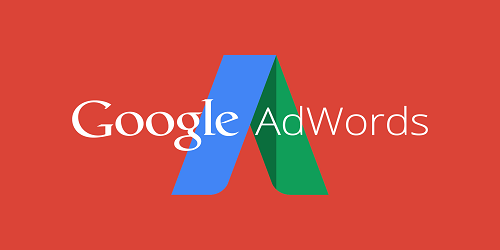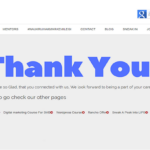
Deciding on Campaign Budget
Campaign budget is a very critical part of the Ad words campaign. Often for many businesses this budget is limited so it is advisable to spend it tactfully to gain maximum ROI. The average daily budget is decided by the user. This is the amount the user is at ease with spending daily and is entered at the campaign level. Note: This amount is for a single campaign only. On an average, Ad words will take a month to be as 30.4 days which is the average number of working days in a month.
For example if the user is working with a monthly budget of Rs. 7,000, then 7,000/30.4 = Rs.230 will give an approximate idea of the average daily budget that could be spent.
The traffic for a given site will vary daily. If Google sees that the traffic on a particular day could lead to more clicks and conversions, then it can spend 20% more than the specified daily budget and consolidate it on days when the traffic is less hence at the end of the month the monthly budget would not be exceeded. If this amount is not adjusted or the campaign is not run for the entire month, then the extra amount will be returned by Google in the bill as Overdelivery.
For example, if the users daily budget is Rs.20 then the maximum he should be charged for a month will be 20 × 30.4 = Rs.608, if Google has exceeded this amount to say Rs. 620, then Rs. 12 will be credited in the bill as Overdelivery and the user will be charged for only Rs.608.
After the campaign is run for some time the user can see recommended budget suggestions on the campaign settings page.
Bidding
Bid is the maximum amount the user would like to pay for the customers to interact with the ads for the campaign. This bidding is real time; Ad words will run an auction every time a space is available for advertisement. This auction will decide which advertisement will be shown in the space available and bidding is the key here. Bidding can be done in different ways. The method one chooses for bidding depends on the business type, requirement and the type of network selected. The aim for bidding can be on impressions, clicks or conversions.
CPC: This is cost per click bidding. In this case the user is charged only when a customer clicks the ad and comes directly to the website. This will drive customers to the website and increase traffic. The CPC bidding can be done by Automatic bidding or Manual Bidding.
Automatic Bidding: In this Ad words will automatically bid for the user. The user just has to set the daily budget and Ad words will try to get maximum possible clicks for the given budget. Ad words will set the maximum CPC here.
Manual Bidding: In this the user will manually set the maximum CPC bid. This is the default option which enables the user to have better control over the bids. With this the user can set different bids for each ad group in the campaign, or individual keywords or placements. For example, if the user sees that a few keywords are generating more clicks then he can allocate more advertising budget to those keywords.
Default Bid: This is the maximum CPC bid the user would enter for every click. This bid applies to the first ad group of the campaign. The maximum CPC is one of the factors that will affect the Ads relative position among other ads. The max CPC is the maximum amount the user is comfortable to pay but the user will be charged less which is known as actual CPC. When Ad words runs an auction the user will need to pay only that is needed to rank higher than the immediate advertiser below it. Quality score will also determine the actual CPC that the user will need to pay. Quality score is dependent on the ad copy, keywords and landing page of the website. In short a better customer experience will provide a great quality score. For example, if a customer types digital watches in the search and you deal in watches, your ad copy will show digital watches and the customer is taken directly to the page of digital watches where he can buy them is a great user experience. These relevant ads will have more impressions and the chances to these getting clicked and in turn getting more conversions are very high. This will give a good quality score. If the Quality score is high you pay less CPC for the Ad rank.
Ad Rank = CPC × Quality Score
The number of times an ad is clicked by the number of views/impressions is given by Click through rate (CTR). This value is always given in percentage.
CTR = (Number of Clicks / Number of views or impressions) ×100
The number of times a lead is generated or sale is completed by the number of clicks is called as conversion ratio.
Conversion ratio = Number of Leads / Number of clicks
Enhanced CPC: If the user enables enhanced CPC then Ad words will look for patterns in searches and clicks. If certain searches and keyword combinations leads to more conversions it will enhance the max CPC bid by 30%.
CPC Calculation: For example; if the number of clicks is given as 250 and the Cost is given as Rs. 10,000, then CPC can be calculated as follows,
CPC = Cost / Number of clicks
= 10,000 / 250
= Rs. 40
Cost per thousand impressions (CPM): This means that instead of clicks the user pays for every thousand times the ad is viewed. This bidding is more useful in creating brand awareness. Just like CPC bidding, CPM bidding can be set for ad groups or individual placements. The user can set maximum amount that is comfortable to him for every 1000 impressions. This is called as Max CPM. If one advertiser is bidding at CPC and the other by CPM, then Ad words will convert CPC to eCPM i.e Effective CPM for an auction.
CPM Calculation: For example; if the number of impressions of an Ad is given as 2,00,000 and the cost to an advertiser is Rs. 5000 then to Calculate CPM ,
CPM = Cost × 1000/ Impressions
= 5000 × 1000 / 200000
= Rs. 25
If say CPM is given as Rs.5 and the Total impressions as 2,00,000, then the actual cost to the advertiser can be calculated as
Cost to the Advertiser = CPM × (Impressions / 1000)
= 5 × (200000/1000)
= Rs. 1000
Cost per Acquisition/ Lead (CPA/CPL): With this method the user will pay after every conversion. The goal is to get a customer to click and come to the website and either buy something or fill in a contact form. These are termed as conversions or acquisitions. This method is available once the campaign has conversion data. A minimum of 15 conversions or acquisitions are required in the campaign to start this.
CPL calculation: For example; if the number of leads or conversions is given as 50 and the cost is given as Rs. 25,000 then the CPL can be calculated as,
CPL = Cost / Number of Leads
= 25,000 / 50
= Rs. 500
The user can set bid adjustments across the campaign for different devices, time and location. If the user is running a display network Ad then bid adjustment can be done for the topics or placements. With bid adjustments the user can gain more control by increasing or decreasing the bids.
Supreet Saggu – Lipsindia student





